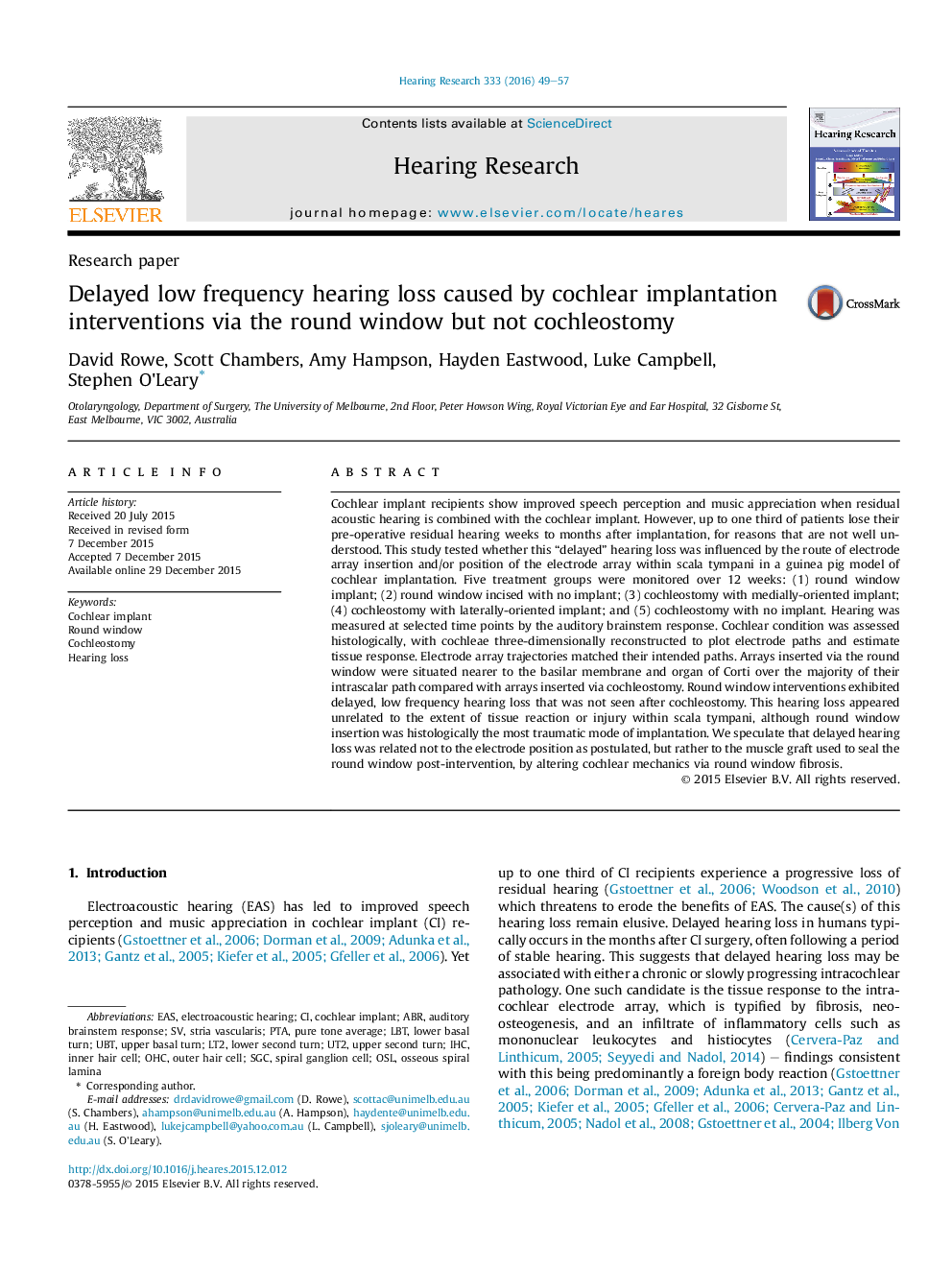| Article ID | Journal | Published Year | Pages | File Type |
|---|---|---|---|---|
| 6286988 | Hearing Research | 2016 | 9 Pages |
Abstract
Cochlear implant recipients show improved speech perception and music appreciation when residual acoustic hearing is combined with the cochlear implant. However, up to one third of patients lose their pre-operative residual hearing weeks to months after implantation, for reasons that are not well understood. This study tested whether this “delayed” hearing loss was influenced by the route of electrode array insertion and/or position of the electrode array within scala tympani in a guinea pig model of cochlear implantation. Five treatment groups were monitored over 12 weeks: (1) round window implant; (2) round window incised with no implant; (3) cochleostomy with medially-oriented implant; (4) cochleostomy with laterally-oriented implant; and (5) cochleostomy with no implant. Hearing was measured at selected time points by the auditory brainstem response. Cochlear condition was assessed histologically, with cochleae three-dimensionally reconstructed to plot electrode paths and estimate tissue response. Electrode array trajectories matched their intended paths. Arrays inserted via the round window were situated nearer to the basilar membrane and organ of Corti over the majority of their intrascalar path compared with arrays inserted via cochleostomy. Round window interventions exhibited delayed, low frequency hearing loss that was not seen after cochleostomy. This hearing loss appeared unrelated to the extent of tissue reaction or injury within scala tympani, although round window insertion was histologically the most traumatic mode of implantation. We speculate that delayed hearing loss was related not to the electrode position as postulated, but rather to the muscle graft used to seal the round window post-intervention, by altering cochlear mechanics via round window fibrosis.
Keywords
Related Topics
Life Sciences
Neuroscience
Sensory Systems
Authors
David Rowe, Scott Chambers, Amy Hampson, Hayden Eastwood, Luke Campbell, Stephen O'Leary,
